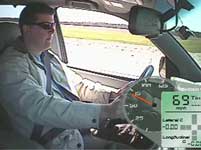Learn To Drive | Distractions Kill Teens
Between 2008 and 2009, 30 states tried to reduce car crashes by enacting bans on text messaging while driving a car. But new research from the Highway Loss Data Institute (HLDI) suggests that these measures haven’t worked at all: in three of four states studied, crash rates actually went up. And all four states saw a rise in crashes involving those under 25 years old. One possible explanation: no one stopped texting.
An additional explanation is the explosion of hand-held devices being used today. People have become addicted to their phones. Teens are the same if not worse. This generation of teens is now starting to learn how to drive a car and are driving cars in an environment choking with electronic distractions. Counter measures are being sought out but unfortunately many lives will be lost before the problem is solved.
The HLDI researchers compared crash statistics from before and after texting laws went into effect in California, Louisiana, Minnesota and Washington. This was compared against the same data from surrounding states without “driving while texting” laws. Not only did crash rates go up in all states but Louisiana, but accidents were regionally consistent regardless of texting laws. So even though Nevada drivers are allowed to text, the state’s crash data matched California’s, where it is prohibited. The data looked at crashes less than a year before and after the new laws. That’s possibly not enough time to modify mass behavior. Transportation secretary Ray LaHood wasn’t pleased with the data.

“Distracted driving-related crashes killed nearly 5,500 people in 2009 and injured almost half a million more,” LaHood said in a prepared statement. “Lives are at stake, and all the reputable research we have says that tough laws, good enforcement and increased public awareness will help put a stop to the deadly epidemic of distracted driving on our roads.”
The new study doesn’t mean that texting while driving is safe, Institute spokeswoman [Anne] Fleming said, only that current legislation isn’t an effective way to deal with the problem.
Fleming suggested that one factor in the surge of crashes could be that drivers hold their phones below window-level to avoid being caught. This could hinder dexterity and slow down reaction time. As the HLDI report said:
Using a driving simulator, researchers at the University of Glasgow found a sharp decrease in crash likelihood when participants switched from head-down to head-up displays. This suggests that it might be more hazardous for a driver to text from a device that’s hidden from view on the lap or vehicle seat.
Previous studies on the use of handheld phones — also banned in many states — found that those laws did not reduce crashes. Still, they didn’t increase the accident rate either.




